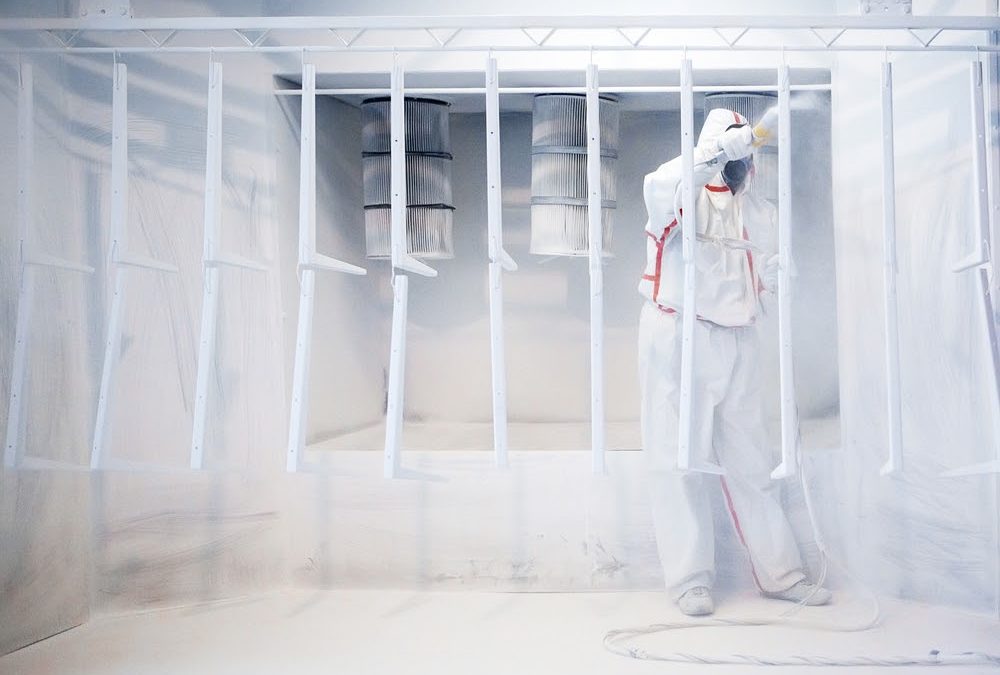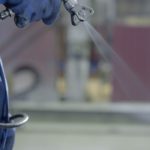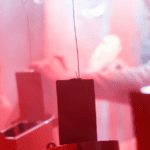Operators who rely on powder coatings for their finishes have several important decisions to make when buying their spray booths. One of the biggest, and often most confusing one, is the choice between a “recovery” and “non-recovery” design. Picking the right option for your finishing operations depends on several factors that determine the booth’s impact on cost and convenience across your production line.
While it’s certainly not required, it’s always a good idea to carefully examine your workflow or manufacturing process so you have easy access to key data when planning your booth. Ideally, operators will have a firm grasp on material costs for their powder coatings, current demands placed on workplace personnel as well as statistics regarding volume and variety of their coating applications.
Basics of a Non-Recovery Powder Booth
A non-recovery powder booth is essentially the more basic of the two booth designs. The initial investment for non-recovery booths is significantly less expensive than a comparable model that is designed to reclaim or recover finishing compounds. They are equipped with a standard filtration system that catches overspray into replaceable filter cartridges that are periodically discarded and replaced with fresh ones.
Aside from a significantly lower initial cost, this booth design is also simpler to operate. This is particularly true for production processes that demand frequent changes to the powder type or color being used in a booth, which is why non-recovery designs are often chosen for these types of applications.
Differences in Recovery Powder Booths
Recovery powder booths can be virtually identical to their non-recovery counterparts aside from changes to the filtration and the addition of a reclamation system. Rather than trap powder overspray in disposable filters, these booths are outfitted with a specialized cartridge-style filtration system that collects the powder so it can be reused—making it more environmentally safe than its non-recovery counterpart.
While this can double the initial cost of the booth, it can also lead to substantial long-term savings. Reclamation not only lets operators get more value out of their finishing compounds, it also cuts down on the costs of safe and responsible disposal of volatile chemicals and far exceeds the safety requirements of NFPA-33 and IFC.
In order to determine if a reclamation system is more cost-effective for your operations, you need to multiply the estimated overspray that the booth will likely produce by the cost of the powder. It can sometimes take years for the cost savings to pay for the booth itself, so it’s typically recommended for high volume, high overspray environments.
Despite the potential benefits of reducing waste, it’s also necessary to factor in the impact on operating efficiency. Recovery spray booths are not as flexible as the latter because filters often need to be changed between colors, and sometimes booths need to be cleaned in order to preserve the purity of the reclaimed powder. This can be a cumbersome and time-consuming process for workers that adds higher potential for human error and disrupts the procedural flow.
Solutions for Your Powder Coating Needs
The decision between a recovery spray booth versus a non-recovery booth can have major financial and logistical implications if your production needs are not properly accounted for, especially in environments with high-volume application. That’s why Spray Systems encourages our clients to schedule a consultation with our engineers for expert recommendations on designs that will compliment their workplace and operations.
As an established and trusted provider of spray booth solutions, our advice is tempered by over 45 years of experience in the industry. We aren’t just here to sell you a booth, we are here to equip you with a tailored solution that balances cost, quality and convenience according to your specific needs. Instead of designing your production around a booth, we believe the booth should be built to optimize and streamline your workflow.


